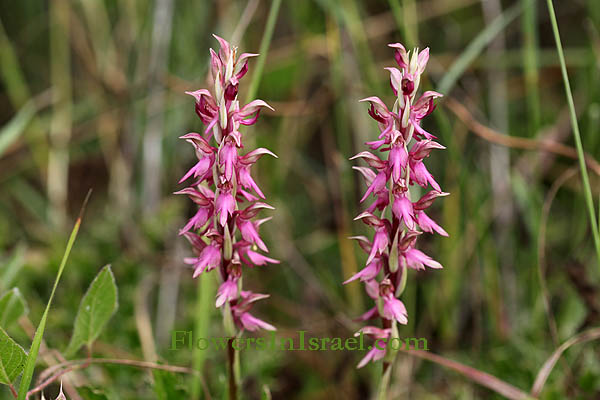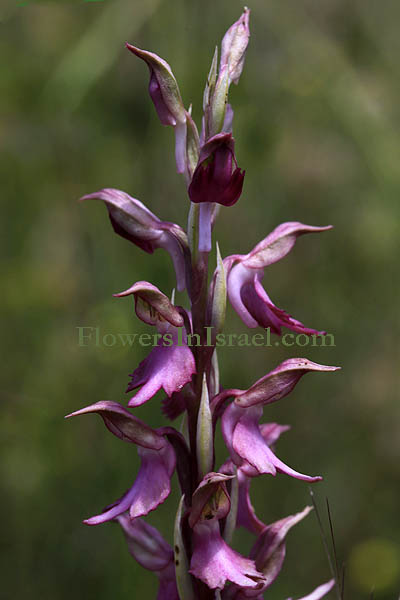Hebrew: סחלב קדוש, Arabic: الأوركيد المقدس
| Scientific name: | Orchis sancta L. | |
| Synonym name: | Anacamptis sancta (L.) R.M.Bateman, Pridgeon & M.W.Chase, Anteriorchis sancta | |
| Common name: | Holy orchid | |
| Hebrew name: | סחלב קדוש | |
| Arabic name: | الأوركيد المقدس | |
| Family: | Orchidaceae, Orchid family, סחלביים |

|
| Life form: | Geophyte | |
| Stems: | 15-45 cm tall | |
| Leaves: | Alternate, rosette, entire, smooth | |
| Flowers: | Inflorescences in spikes; fairly large unspotted lip; colour is mostly pink but it does vary and can sometimes be tinged with brown | |
| Fruits / pods: | Capsule | |
| Flowering Period: | April, May | |
| Habitat: | Batha, Phrygana | |
| Distribution: | Mediterranean Woodlands and Shrublands, Montane vegetation of Mt. Hermon | |
| Chorotype: | Mediterranean | |
| Summer shedding: | Ephemeral | |
| Protected Flower, צמח מוגן: | No |

Derivation of the botanical name: Orchis, ορχιϛ, "testicle" (here, shape of), from the rootform of some species. For that reason, Orchis has been regarded since antiquity as an aphrodisiac. sancta, holy. Anacamptis, anakampto, bend back, referring to the spur or to the reflexed tracts or pollina. Anteriorchis, Latin anterior, foremost plus orchis. The Hebrew name: סחלב, sahlav, Arabic sahlab, corrupted from tha'lab in husa al-tha'lab (=the fox’s testicles), the Arabic name of the tubers of the Orchis mascula (so called from the resemblance of the roots to testicles).

|